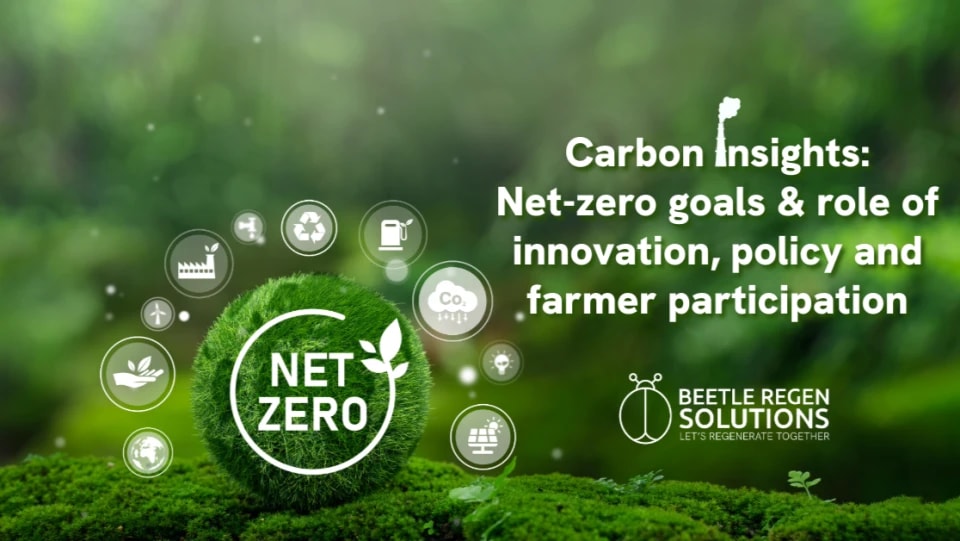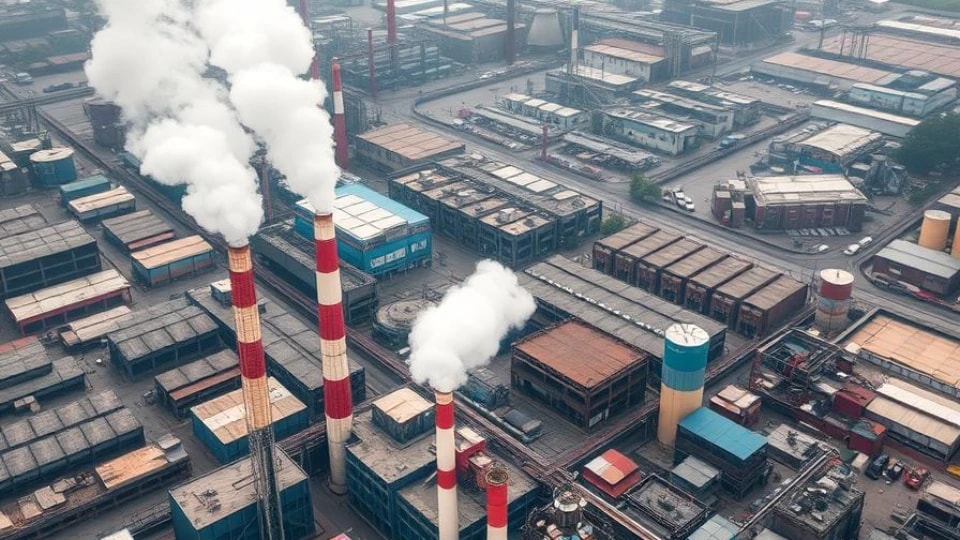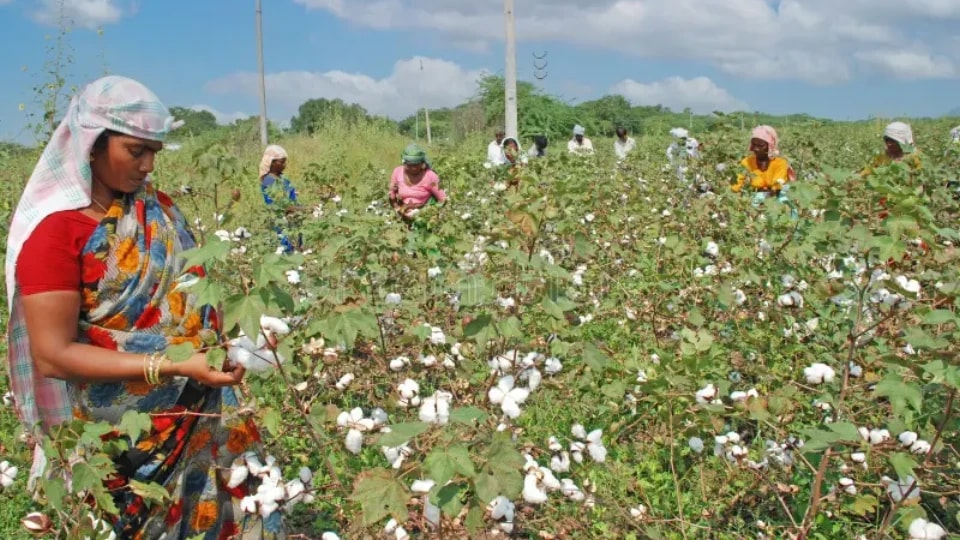Carbon Insights: Net-zero goals, role of innovation, policy and farmer participation
June 13, 2025 | By Dr. Raja Krishna Murthy M, Vice President - Carbon Strategy, Beetle Regen Solutions

Cotton Industry's Journey towards Net-Zero Emissions
The textile industry is one of the largest global polluters, contributing approximately 10% of global greenhouse gas (GHG) emissions annually, driven largely by fast fashion and overproduction. If the current trends continue, emissions from this sector are projected to increase by over 60% by 2030, reaching an estimated 2.8 gigatons of CO₂ equivalent per year. That's more than the combined emissions of international flights and maritime shipping.
The cotton industry is however, stepping up its game in the race to net zero. India has pledged to slash GHG emissions by 50% per tonne of cotton lint by 2030, while the 2025 Sustainable Cotton Challenge pushes for a 35-45% cut in CO₂ from textile fibre production.

Across the value chain, climate action is no longer optional, it's of dire importance. With brands and stakeholders making bold sustainability moves, the shift is clear: real change will come from a blend of innovation, policy support and grassroots farmer participation.
While cotton cultivation contributes about 13% of a T-shirt's total GHG emissions, a staggering 87% comes from textile manufacturing. This means that while improving on-farm practices is essential, the road to sustainability runs far deeper. The fashion industry contributes 6-8% of global CO₂ emissions annually, and switching to renewable energy in textile production could slash a garment's carbon impact by 30-50%. To truly move the needle, solutions must go beyond the field—right into the heart of manufacturing.

Reduce emissions from upstream operations
Upstream operations—material production, processing, and garment manufacturing—hold the key to slashing emissions, with textile and fiber companies contributing nearly 61% of the potential reduction. By focusing on energy efficiency, minimizing waste and shifting from fossil fuels to renewables, the fashion value chain can make significant strides toward decarbonization.
Reduce emissions from brands own operations
Brands can cut emissions by rethinking everything from material choices—like using more recycled fibers—to greener logistics, lighter packaging, and decarbonized retail. Tackling overproduction and reducing returns also make a big difference.
On the consumer side, the shift toward mindful fashion- buying less, choosing better and embracing reuse is key. Circular models like rental, resale, repair, and recycling aren't just trends, they're powerful tools to reduce waste and move the industry toward a closed-loop, low-emission future.
Empowering Farmers for a Sustainable Future: Beetle's Climate-Positive Initiatives

By adopting regenerative agriculture and biochar practices, farmers can:
- Improve soil health and fertility
- Increase crop yields sustainably
- Reduce dependence on synthetic fertilizers and pesticides
- Sequester carbon, reducing greenhouse gas emissions
- Transform agricultural waste into valuable resources
These solutions are not just about growing cotton—they're about rebuilding ecosystems and securing a more resilient, sustainable future for agriculture.
Farmers are the backbone of our food system but face mounting challenges today. Beetle supports scalable solutions like regenerative agriculture, biochar, and carbon credits—practices that enrich soil, improve yields and open new income streams. Through policy support, partnerships, and investment, we're enabling the shift toward climate-positive cotton.
Carbon Credits: Rewarding Farmers for Climate-Friendly Practices
Carbon credits offer a market-driven incentive for farmers who reduce greenhouse gas emissions or sequester carbon in their soil.
Beetle supports farmers in tapping into these opportunities by:
- Offering technical support for measuring and verifying carbon sequestration
- Connecting them with verified carbon credit buyers
- Advocating for policies that enable agriculture-based carbon markets
By joining carbon markets, farmers can earn additional income from climate-smart practices like regenerative agriculture, biochar and Alternate Wetting and Drying (AWD). These earnings can help offset the costs of transitioning to more sustainable systems, making climate action profitable.
Beetle's Commitment to Ethical & Responsible Cotton Production
Cotton cultivation often comes with environmental and social costs—ranging from water stress to labor exploitation. At Beetle, we go beyond climate-positive farming by:
- Promoting ethical practices and safe production standards across the supply chain
- Encouraging efficient irrigation to conserve water
- Supporting circular solutions like converting cotton waste into biochar
- Empowering farmer communities and ensuring equal opportunities
We believe sustainability must be holistic—encompassing people, planet, and process. That's why our regenerative cotton initiatives aim not just at lower emissions, but also fairer, more resilient systems.
Cotton Industry: A Multifaceted Path to Net-Zero
Reaching net-zero in the cotton sector isn't about one fix—it demands a layered strategy that blends innovation, policy, and grassroots action. Key focus areas include:
- Accelerating R&D in low-emission technologies and sustainable processing methods
- Scaling regenerative and precision agriculture to improve yields while restoring ecosystems
- Equipping farmers with tools, training, and market access to adopt climate-smart practices
The future of cotton lies in collaboration—between farmers, innovators, and industry leaders—so we can build a resilient, low-carbon value chain that works for both people and the planet.
Strategic Investments and Regulatory Support: Enabling the Transition to Climate-Positive Cotton
To achieve its vision of a climate-positive cotton industry, Beetle is advocating for:
- Increased public and private investment in sustainable cotton production.
- Regulatory policies that incentivize the adoption of climate-friendly practices.
- Collaboration among farmers, researchers, policymakers, and industry stakeholders.
By working together, we can create a policy environment that supports the transition to climate-positive cotton production and rewards farmers for their efforts. With strategic investments and regulatory support, the sector can shift to climate-positive cotton production, ensuring a sustainable future for both farmers and the planet.
Conclusion
Achieving net-zero isn't just a science challenge—it's a leadership one. Policymakers must lead with bold regulations and meaningful incentives that reward green innovation, responsible consumption, and high-impact decarbonization strategies. Investors, too, have immense power to accelerate this shift—by backing climate-smart businesses, demanding transparent emissions reporting, and championing innovations that redefine sustainability. Together, they can turn ambition into action—and potential into progress.
References:
- Better Cotton: GHG Emissions Reporting for an Ambitious Climate Change Approach | AVPN
- Textile Exchange News Release - 2030 Strategic Direction and Conference Outcomes - Textile Exchange
- Carbon footprint of global cotton production - ScienceDirect
- Taking climate action: Measuring carbon emissions in the garment sector in Asia